Taxila, Sirsukh
Q69132225Taxila (Old Indian Takshaçila, Greek Ταξίλα): the ancient capital of the eastern Punjab, the country between the rivers Indus and Hydaspes. The site consists of several parts, which belong to the Achaemenid, Greek, and Kushan periods.
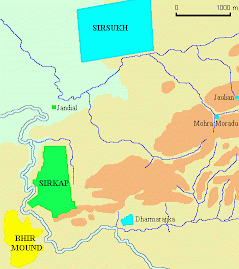
After 80 CE, the Punjab, which had been conquered by Macedonians, Greeks, Sacae, and Parthians, was taken over by the Yuezhi nomads or Kushans, a tribe that had once lived in northern China. Their king Kanishka abandoned the part of Taxila known as Sirkap, and founded - in a green and lush valley - Sirsukh. It was to become famous for its fortifications.
The fortification wall, made of rough rubble and faced with the heavy diaper masonry masonry that is characteristic for this period, is almost 5 kilometers long and nowhere less than 6 meters thick. It surrounds an irregular square of 1350 x 1000 meters. The inner part of this citadel was not really investigated by archaeologists. It is low-lying and abundantly irrigated land, where ruins are buried inaccessibly deep.
There were several contemporary Buddhist monasteries (e.g.,Jaulian and Mohra Moradu) in the neighborhood.
Sirsukh was left when the White Huns invaded the Punjab in c. 500 CE. Today, it is partly covered with hemp.
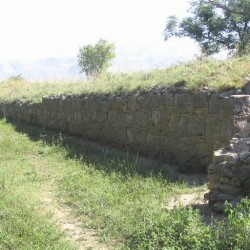 Sirsukh, wall, inside |
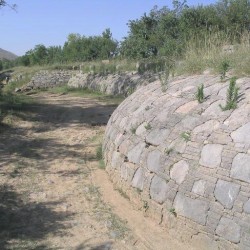 Sirsukh, wall, outside |
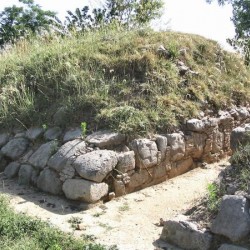 Sirsukh, wall, gate |
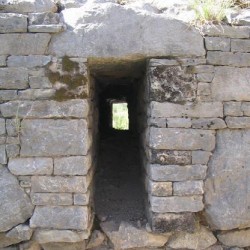 Sirsukh, wall, loophole |